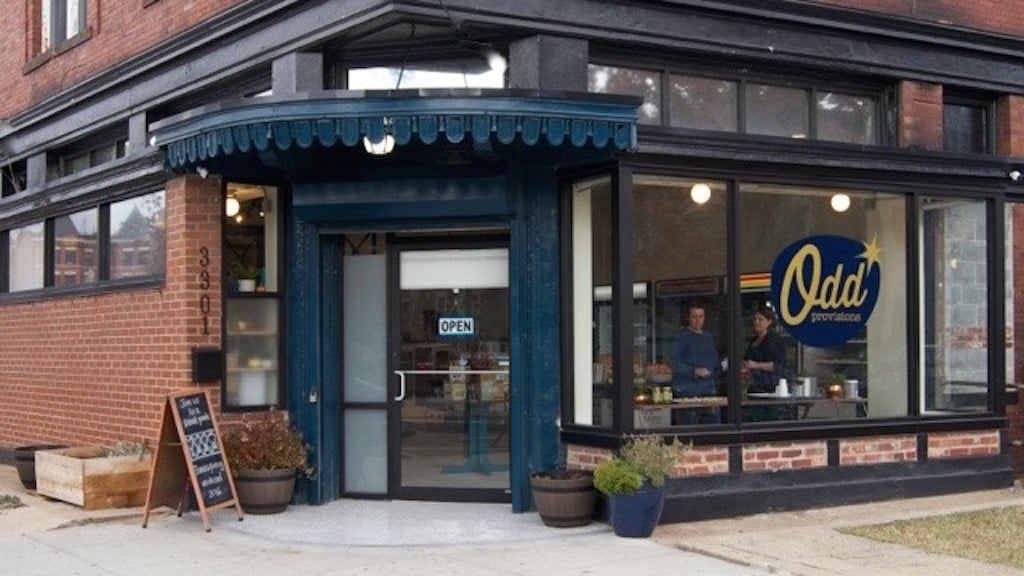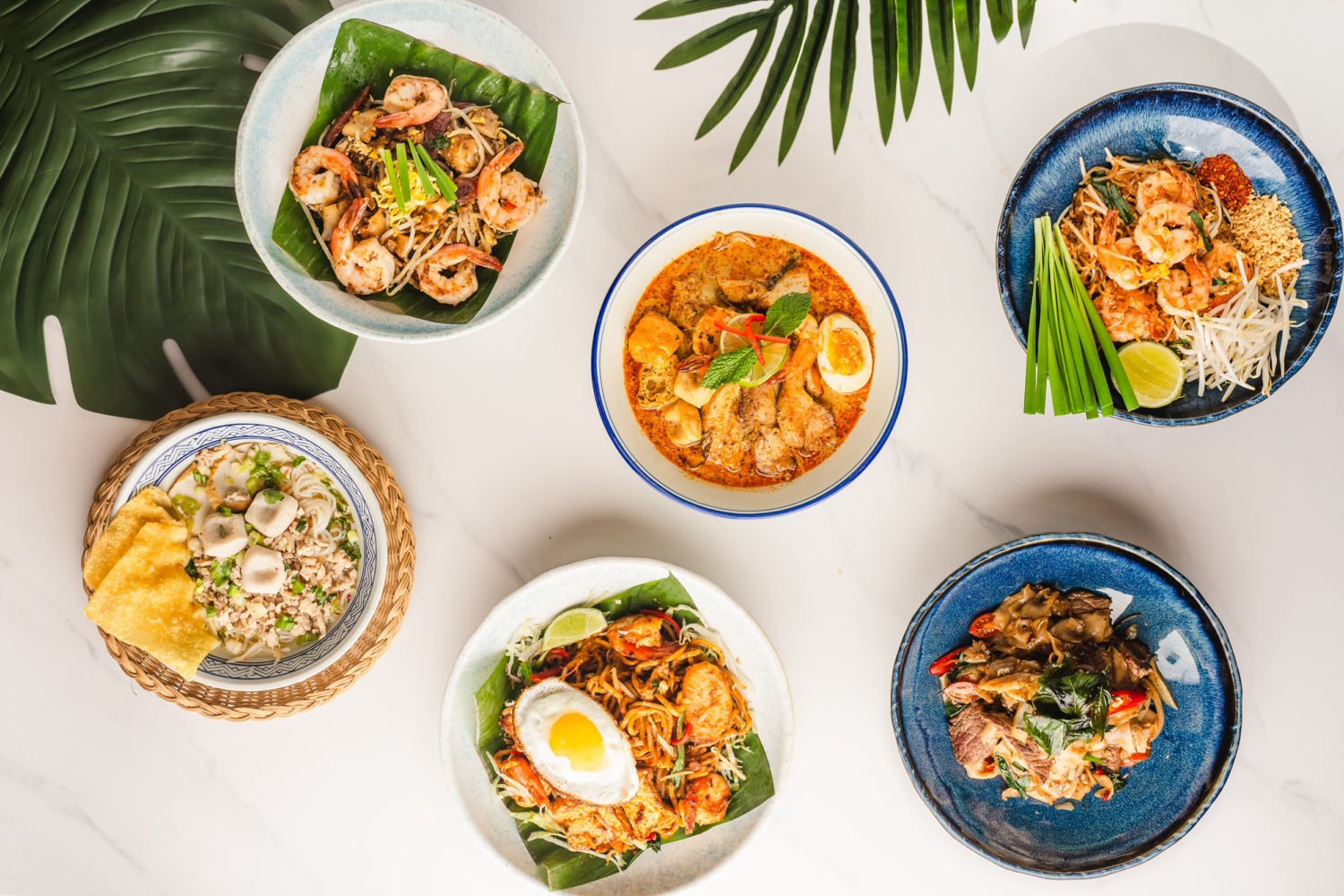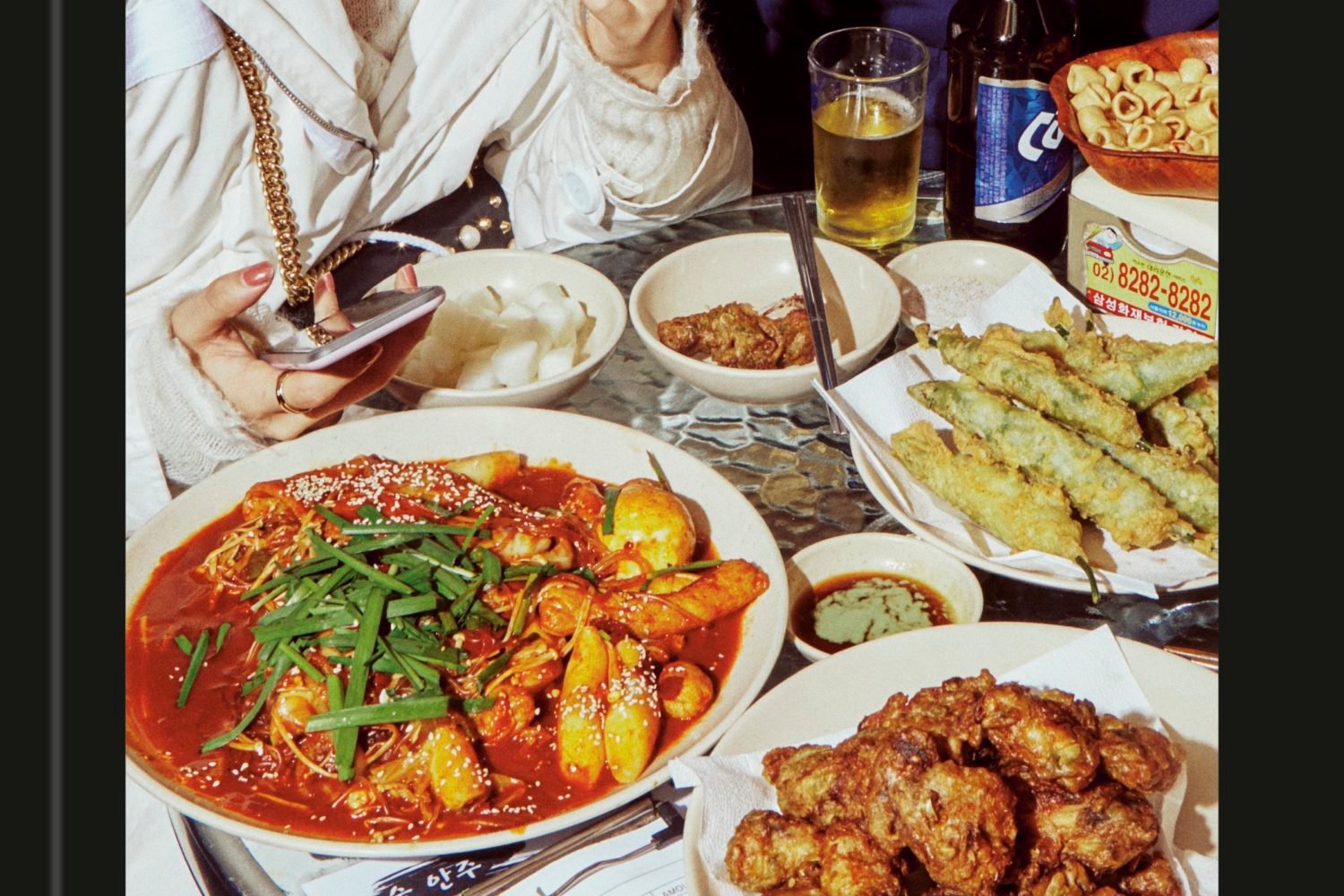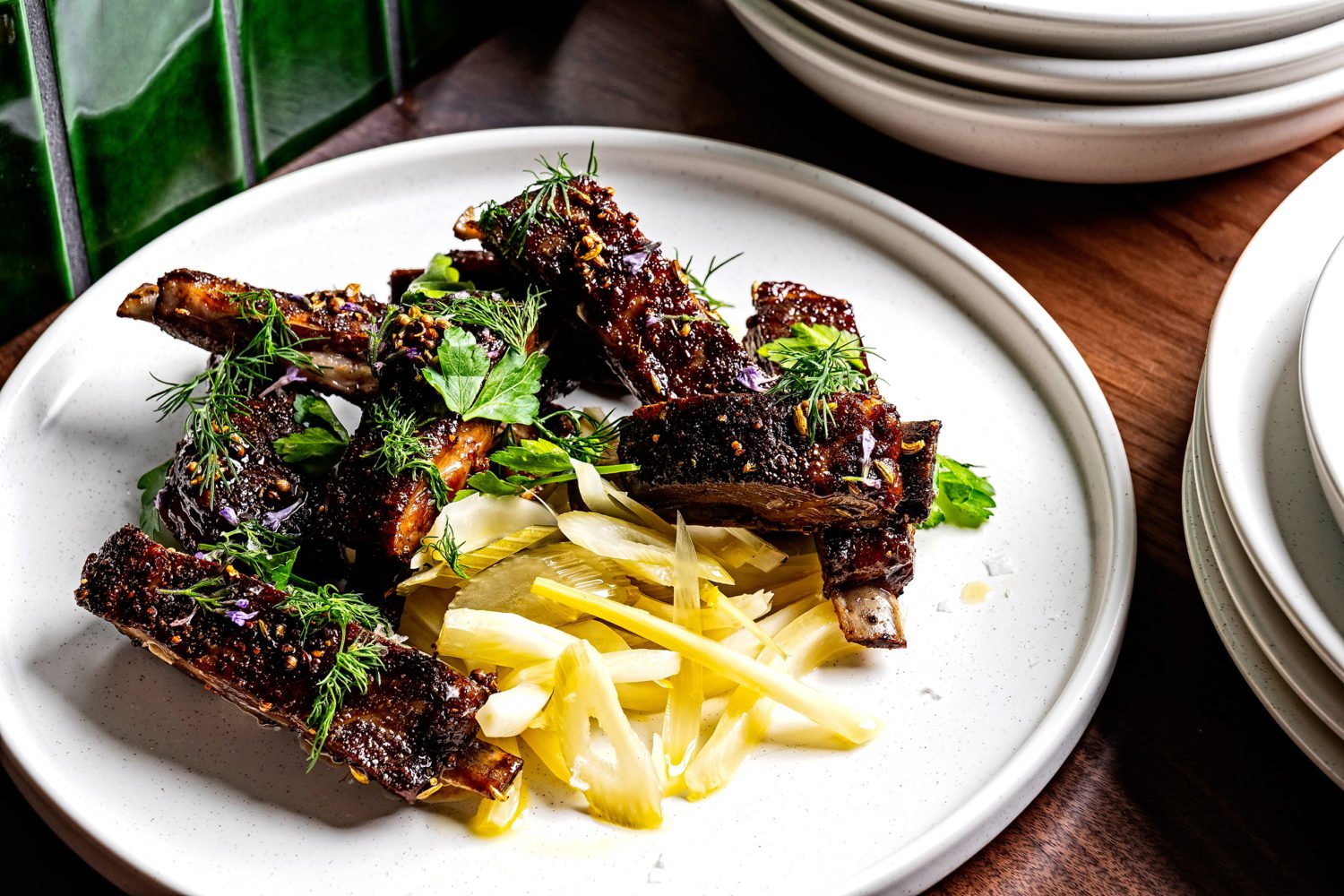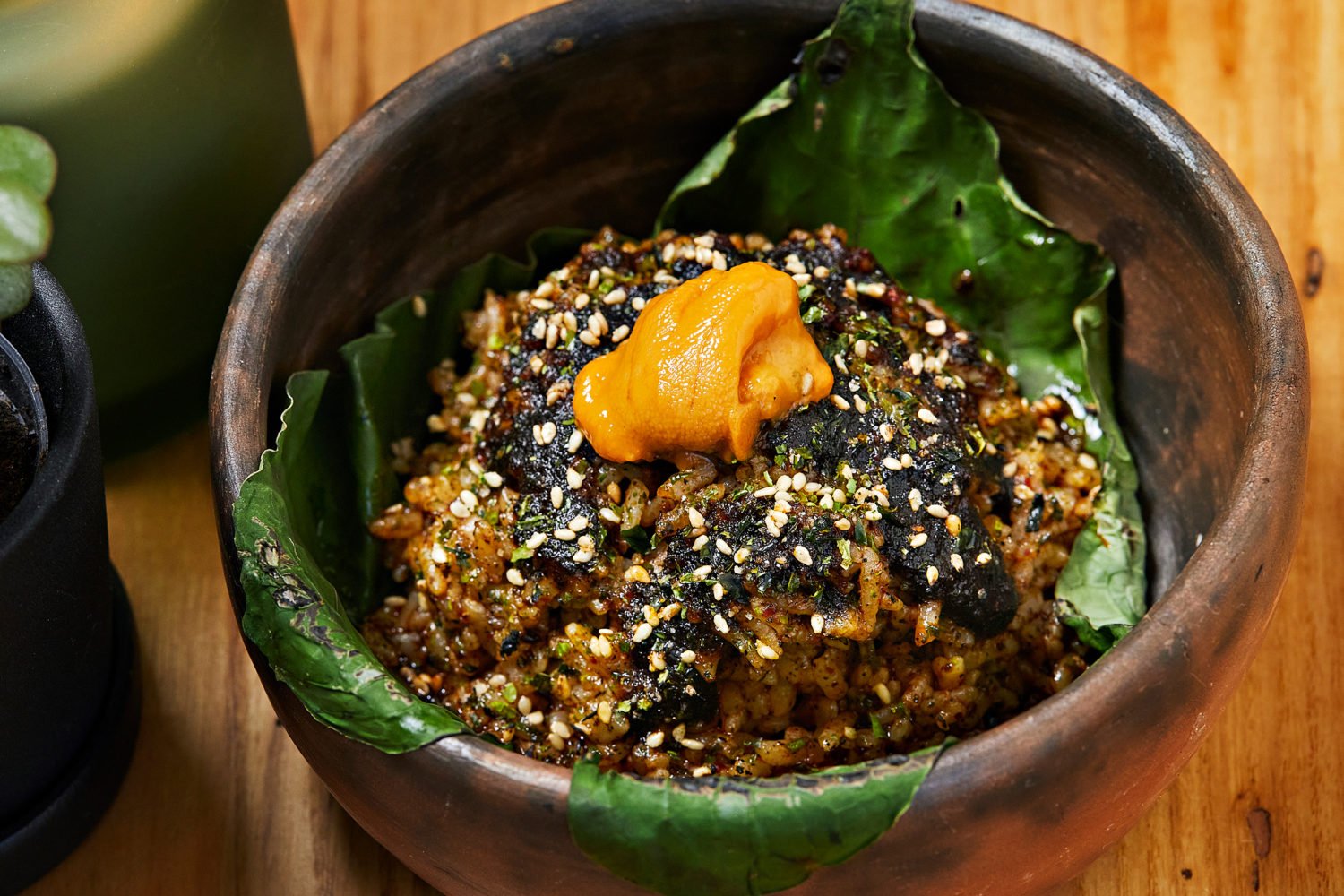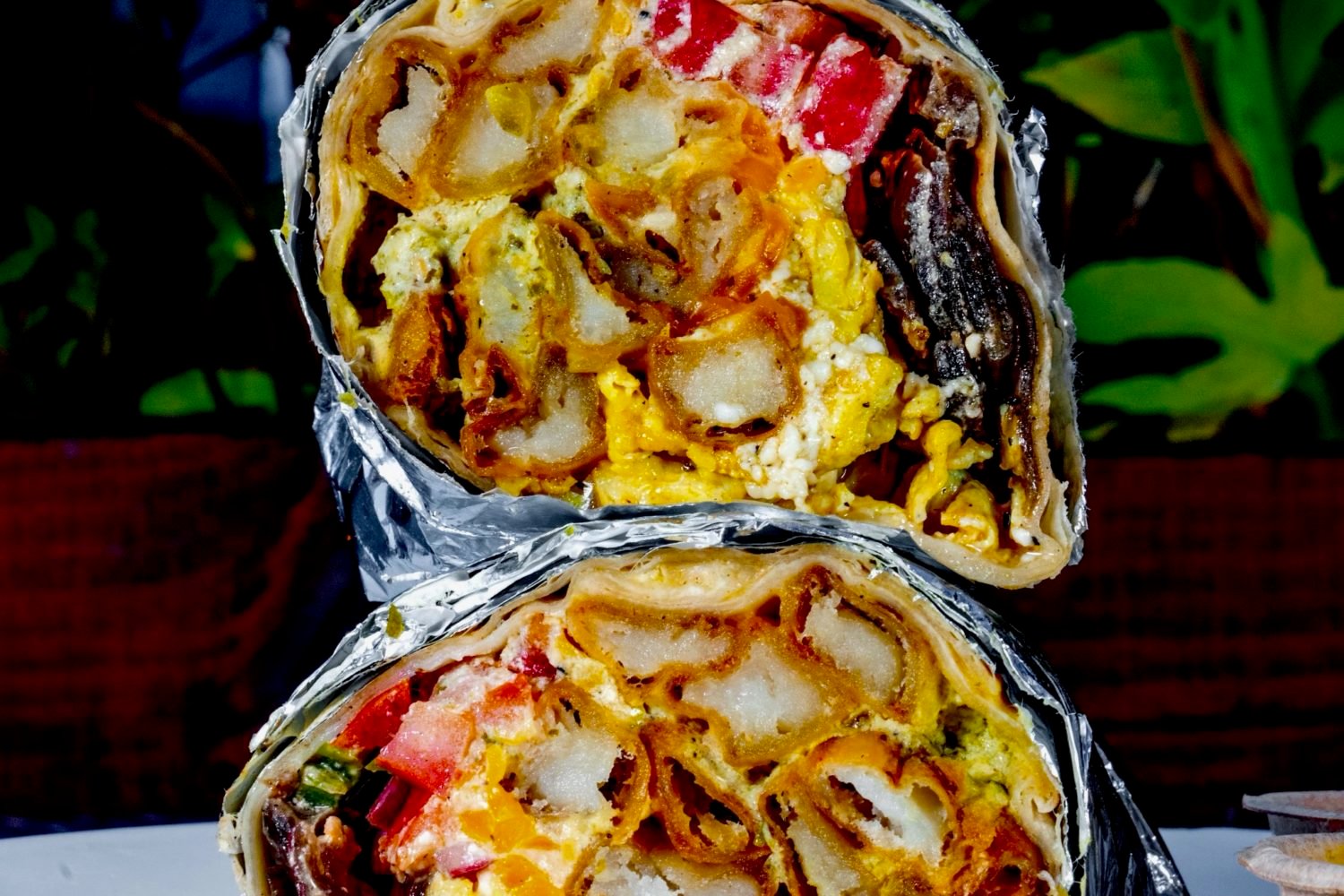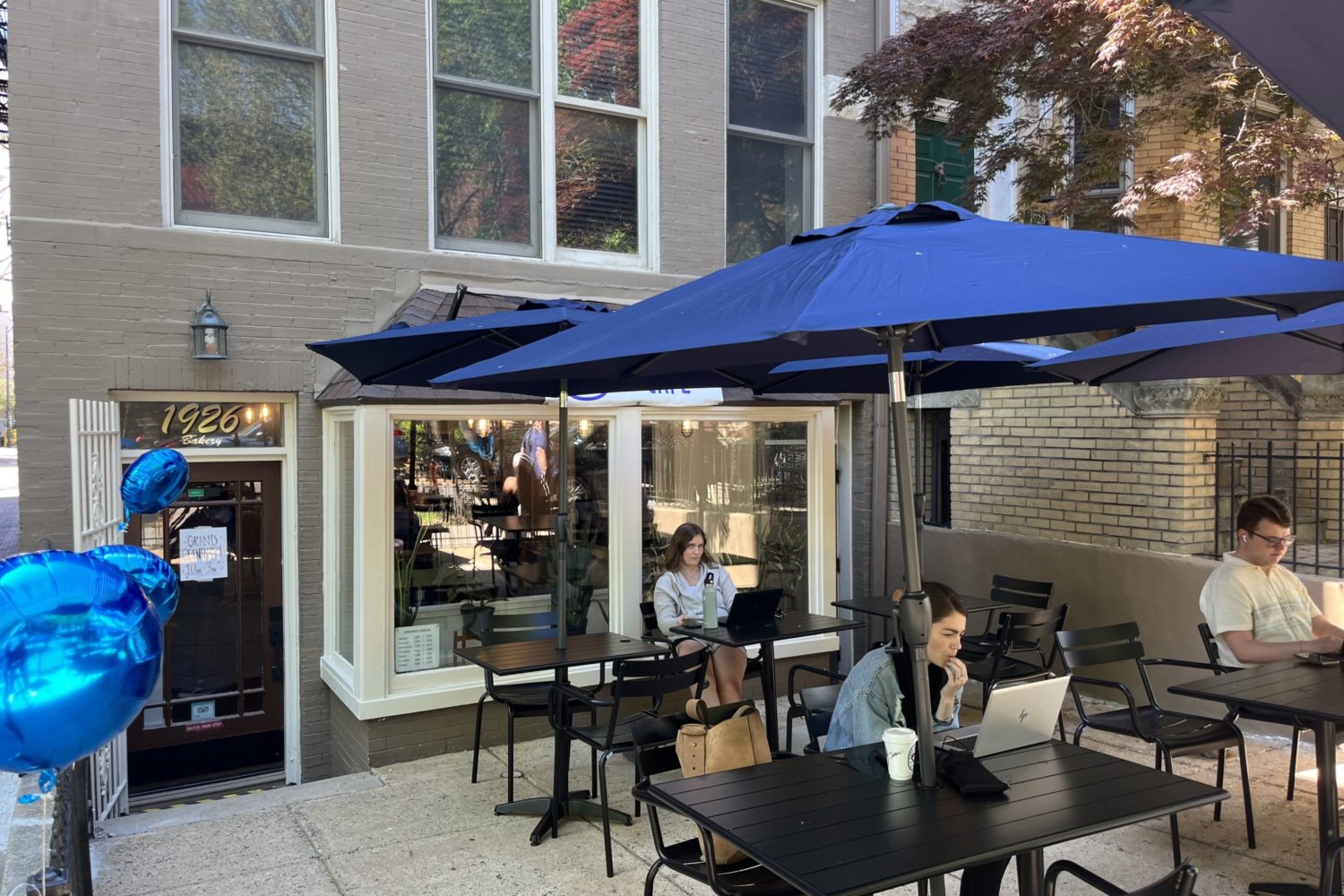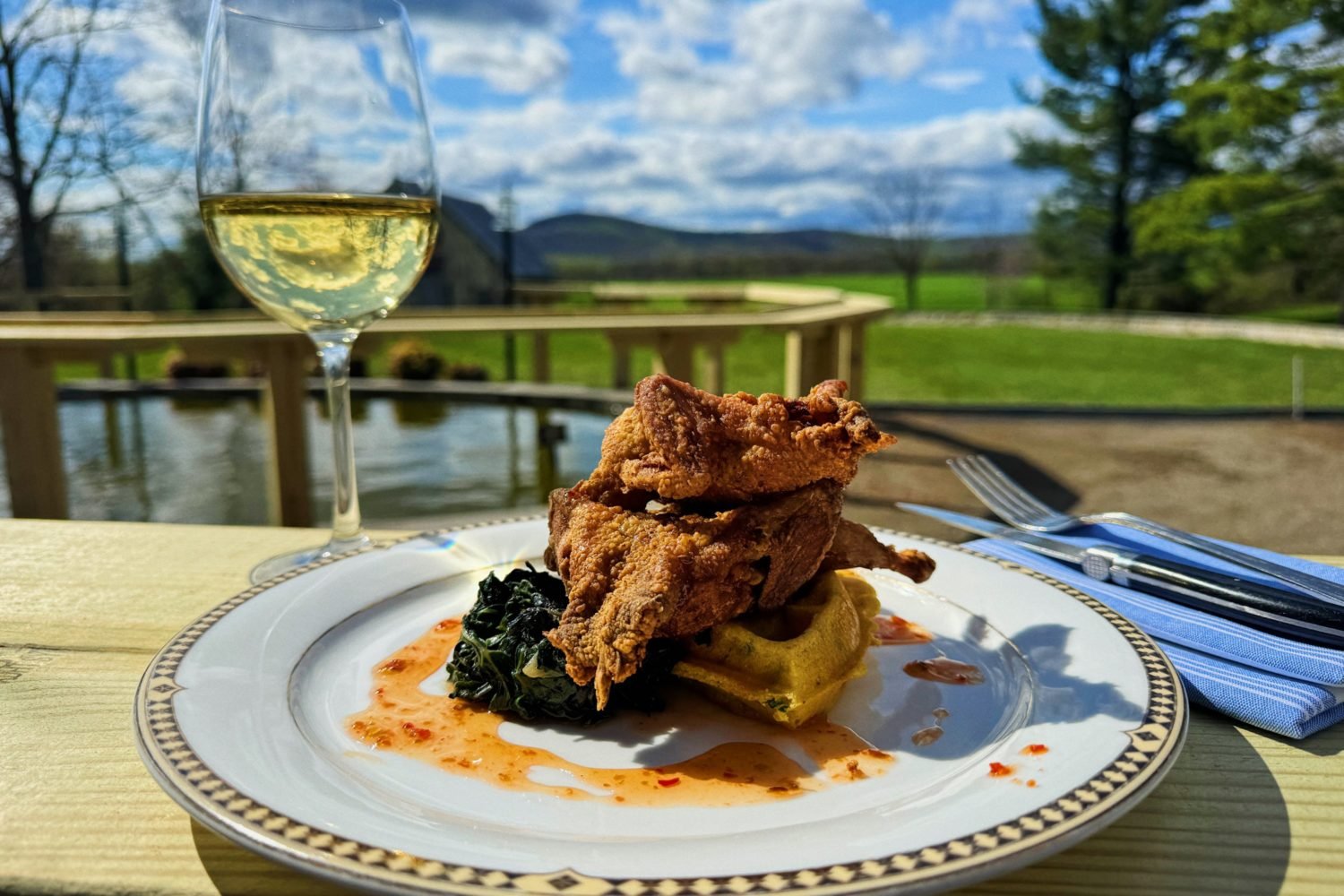Don’t be deceived by the French-accented waiter depositing napkins on your plate with a pair of silver tongs. Or by the velvet-upholstered pedestals carted to the table to support madame’s purse. Or by the swan’s-neck wine decanter that deposits a judicious stream into the glass.
Plume, the new restaurant in DC’s renovated Jefferson hotel, may look like the most luxurious dining destination in town, but beneath the plush refinements beats the heart of a reactionary. At a time when the last supporting walls of fine dining are giving way, when small plates are ascendant and more great meals are to be had in clattering, bustling spaces than in hushed ones, Plume is intent on returning us to the past. To decorousness. To everything laid just so.
“Look at that,” I said to a friend one night, indicating the silver-rimmed chargers on a corner table dressed with not one but two tablecloths. “When’s the last time you saw a charger at a restaurant?”
“What’s a charger?” he replied.
His voice was not that loud, but it was incongruous with the sacramental hush of the room. A dark-suited waiter lifted his head in concern. The solo diner at the nearest table looked up over his Wall Street Journal with a reproving glare.
My friend and I looked at each other. “I feel like I’m going to be scolded if I don’t sit up straighter,” he said.
A lot of diners aren’t accustomed to dining out this way, to sitting up straight and modulating our voices, to having our plates being supported and framed by yet another plate; Plume piles on the little luxuries as though to encourage awed submission. That charger, for instance. It’s adorned with a pressed cloth doily.
Most new restaurants these days bunch their tables close together, the better to accommodate more diners, but personal space is such a serious matter at Plume that if a table isn’t private enough, you can opt to pay a “reservation fee” for an alcove made more so by a silk curtain.
Should you show the slightest indecision about wine, a sommelier will materialize to discourse on the “lovely notes of strawberry frappé” of a particular rosé. You’ll likely find him at the hostess stand on the way out, too, proffering a scroll of paper with the name of the winery, the wine, and the vintage you drank.
Touches like these don’t come cheap. But $20.50 for a second-rate Manhattan? Or $13.50 for a bowl of soup—the bargain among the appetizers? And $16 for all desserts, when $8 to $10 is the norm? In this economy?
Plume makes no apologies, believing that its commitment to indulgence is what separates it from the pack of noisy, casual restaurants now dominating the scene—a cultivated alternative for the discriminating diner. Doubtless there are people for whom Plume will be a transporting night out—on OpenTable.com, the consensus among 146 anonymous reviewers is that Plume is a 5-star (out of 5) experience—but truly discerning diners who know that worth has little to do with packaging are likely to be unmoved.
The lingering impression of my first meal is one of unremitting blandness. I admired the carving of the vegetables, the straining of the velouté, the apparently high quality of the ingredients—but I kept wondering when I’d be transported by the deliciousness of a dish.
The velouté, made from sunchokes, tasted mostly of butter and cream. A breast of poularde—a young, fattened hen—was coated in bread crumbs that had been seasoned with minced black truffles, but the meat was cooked too long and tasted like a gourmet version of Shake ’n Bake. A thick filet of aged beef was cooked perfectly, but its texture was chalky. The accompanying marrow bone, shaved to a canister-like smoothness, was even whiter than the plate and appeared to have been fossilized; its rich, luscious insides, mixed with bread crumbs and minced parsley, had been reduced to a boring paste.
The chef, Damon Gordon, isn’t lacking in talent. Before arriving at Plume, he logged more than a dozen years working in some of the world’s most fashionable luxury-hotel kitchens, including elite properties in London, New York, and San Diego. On my second visit, as a friend and I lingered over a bowl of chewy soba noodles in a robust duck consommé and a trio of foie gras, I wondered whether that first visit had been an off night. Foie gras has all but vanished from restaurant menus, a casualty of the new casualism, but this virtuosic triptych—pistachio-rolled torchon, seared slab with curried grape, demitasse of custard topped with sea urchin—was a reminder of its charms. And I had to admire Gordon’s whimsy in studding the torchon with Pop Rocks, which triggered tiny explosions in my mouth. In the august dining room, with waiters looking on like exam proctors, it was as if a mischievous classmate had played a private joke and set off little firecrackers under my desk. Gordon’s navarin of lobster—yes, a night at Plume means boning up on all those French terms—was nearly as good, its tender poached claw and tail meat accented by a delicate garam masala with curry oil.
One thing you can count on at Plume is that it’s going to spring for the good stuff. But that doesn’t always add up to good eating. A waiter one night assured me that the crab in the risotto was from Maryland, but whatever sweetness it might have had was lost amid the buttery excess of the long-stirred rice.
By my third visit, I decided there was only one way to appreciate a place like Plume, and that was to surrender to it.
To experience the full extent of the wine service, a friend and I indulged in several glasses each, among them a marvelous Riesling from Pfalz, along with a half bottle of Burgundy from Volnay, one of more than 250 half bottles in stock—a big number considering that most restaurants don’t offer more than two or three. This wasn’t drinking for drinking’s sake. With its old-school reductions and rich saucing and its heavy reliance on truffles, foie gras, and sweetbreads, Gordon’s cuisine is made for wine, and with the glasses in advance of our courses, we were priming our palates for the indulgences to come.
I’d already tried the foie gras trio, but I was less interested in covering ground on the menu than in giving Plume one more chance to dazzle. The trio was stellar. But nothing else approached its level. A savory napoleon was gorgeous on the plate, with poached sweetbreads and roasted mushrooms spilling from its panes of puff pastry, but the vanilla butter sauce was so sweet I wondered if it had been mistakenly spooned from the pastry station. A dish billed as rabbit wrapped in prosciutto turned up a pair of cased, cut-on-the-bias sausages that resembled thin hot dogs. The bigger disappointment was that they’d been overcooked and had a spongy texture. The same was true of a gâteau of sole, which, despite its intricate construction, resembled a fishcake: all chew and no delicacy. The attraction of the dish had been the truffle vinaigrette, but now it seemed like a squandering of luxury.
No dessert could have redeemed the night, but our lone selection, a precious arrangement of lime custard with tapioca pearls, didn’t even come close. We left it and a plate of unremarkable petits fours unfinished. The highlight of our last two hours: a few slivers of superb aged blue cheese from the cheese trolley, which moved through the ornate set piece of a room like an SUV.
Sated but not satisfied by our $300-plus evening, we decided it was long past time to leave. A waiter arrived to pull out our table and make our exit easier. In the lobby, the sommelier was waiting with our scroll of wine information. Nearby, a doorman with a top hat
hovered, ready to usher us to our idling cars.
That’s Plume: sumptuous, civilized, everything according to script. But rarely have I left a restaurant feeling more disappointed. And unfortunately, that’s Plume, too.






